
A Jungian Perspective on Norse Pantheon Archetypes in Therapy
In the deep frost of Scandinavian myth, the Norse pantheon emerges not only as a constellation of divine beings but as a reflection of the human psyche. Unlike the rigidly idealized gods of Greek and Egyptian myth, the gods of Norse mythology seem to struggle with the same chaotic, inevitable forces that shape the human condition. These figures—Odin, Thor, Freyja, Loki, and others—are not merely external representations of power or virtue but personifications of the many aspects of self. By examining these gods through a Jungian lens, we can reveal how they serve as projections of our inner world, allowing us to comprehend the forces within us.
Carl Jung’s concept of archetypes helps us understand that mythological figures can symbolize universal, often unconscious, patterns of behavior and experience. Myths provide the structure for these archetypes, shaping the collective unconscious into more comprehensible forms. The Norse gods, through their interactions and narratives, embody these archetypal forces and can be used in modern psychotherapy to explore the parts of the self that they represent.
But the Norse pantheon is also different in how its gods embody ambiguity, chaos, and fate. This is particularly true of Loki, a figure who subverts and disrupts more than any trickster from other pantheons. Loki embodies chaos, not as a controlled element but as a force that emerges when social boundaries dissolve, often triggered by alcohol, competition, and conflict. Loki, as the child of an ice giant and a companion to the gods, presents a paradox: he is close to the gods, yet never truly one of them. Unlike Odin, Thor, or Freyja, there are no temples dedicated to Loki, no ruins inscribed with his image. He isn’t worshiped or revered in the same way. His role is not as a protector but as a disrupter. This chaotic element is essential in understanding the forces at play in Norse mythology and in the psyche itself.
As we think about Loki and the rest of the pantheon from a Jungian perspective, it becomes clear that these gods function as metaphors for the internal forces that govern the self. Just as Loki shows up when boundaries are loosened, chaos within the psyche can emerge when certain psychological defenses weaken. Loki’s presence is a warning, a reminder of the potential chaos lurking beneath order, just as the Eddas warn against drunkenness and reckless behavior.
In therapy, the use of archetypes can help patients identify where they project different parts of themselves. For example, someone may project the warrior archetype onto Thor, the caregiver onto Frigg, or the lover onto Freyja. These gods help individuals explore the complexities of their psychological make-up, enabling them to find balance in their internal world.
Mythology Series
The Uniqueness of Norse Mythology
Norse mythology, as presented in the Poetic Edda and Prose Edda, is distinct in its focus on conflict, chaos, and inevitability. Unlike the more harmonious, orderly pantheons of other cultures, the Norse gods are depicted as constantly facing their own mortality, with the impending doom of Ragnarok hanging over them. This gives the mythology an existential tone, as the gods, though powerful, are not omnipotent or eternal. Fate and death loom large in their stories, creating a somber yet poignant resonance in the mythology.
This fatalism is exemplified by figures like Odin, who sacrifices an eye for wisdom but still cannot avoid the end of all things. Thor, though incredibly powerful, cannot prevent the coming of Ragnarok. Freyja, a symbol of love and fertility, must also face the inevitability of death. The gods in Norse mythology are both powerful and vulnerable, embodying the duality that exists within the human psyche.
In comparison, Greek gods are more static—immortal, ruling over their domains with a sense of permanence. Norse gods, however, are engaged in a constant struggle with forces beyond their control. This makes Norse mythology a unique wellspring for psychological exploration, as it reflects the tensions and conflicts inherent in the human experience.
The Pantheon and Psychological Archetypes
Each of the gods in the Norse pantheon represents different aspects of the self. Through their stories and characteristics, they serve as archetypal figures that correspond to fundamental forces within the human psyche. Below, we will examine ten key gods of the Norse pantheon and explore their psychological significance from a Jungian perspective, along with how they can be applied in therapy.
Odin – The Wise Old Man
Odin, the Allfather, is the god of wisdom, poetry, and death. He sacrificed his eye to gain knowledge, symbolizing the archetype of the Wise Old Man, representing wisdom gained through personal sacrifice. In therapy, Odin can help individuals access their inner wisdom and make decisions based on long-term values rather than immediate gratification. However, Odin’s darker side, as a god of death and deceit, reminds us that the pursuit of wisdom often involves confronting difficult truths.
Thor – The Warrior
Thor, the thunder god and protector of Midgard, represents the Warrior archetype. He embodies strength, courage, and a fierce sense of protection. In therapy, Thor can help patients connect with their inner strength and assertiveness. For those who struggle to stand up for themselves, invoking the archetype of Thor can lead to a greater sense of personal power. However, Thor’s impulsivity and temper are reminders that unchecked warrior energy can become destructive.
Freyja – The Lover
Freyja, the goddess of love, beauty, and fertility, is an embodiment of the Lover archetype. She represents sensuality, desire, and the life-giving force of nature. In therapy, Freyja can be used to explore issues of sexuality, relationships, and self-love. Patients who struggle with intimacy or self-acceptance may find healing through the exploration of Freyja’s archetype.
Loki – The Trickster
Loki is perhaps the most complex figure in Norse mythology, representing the Trickster archetype. He embodies chaos, disruption, and the shadow aspects of the self. In therapy, Loki can help patients confront and integrate their shadow selves—those parts of the psyche that they have repressed or denied. However, Loki’s energy must be handled with care, as it can also lead to destructive behavior if not balanced properly.
Frigg – The Mother
Frigg, the queen of Asgard and wife of Odin, represents the archetype of the Mother. She is associated with care, protection, and nurturing. In therapy, Frigg can be invoked to explore issues around caregiving, boundaries, and familial relationships. For those who struggle with over-identification with the caregiver role, working with Frigg’s archetype can help in establishing healthier boundaries.
Balder – The Innocent
Balder, the god of light and purity, represents the Innocent archetype. His untimely death is one of the great tragedies of Norse mythology, symbolizing the fragility of innocence. In therapy, Balder can be used to explore issues of vulnerability, trust, and the loss of innocence. Working with this archetype may help patients reconnect with their sense of wonder and trust in life.
Tyr – The Hero
Tyr, the god of law and justice, sacrificed his hand to bind the wolf Fenrir, representing the Hero archetype. He embodies courage, sacrifice, and the upholding of moral order. In therapy, Tyr can help patients confront their own heroic potential, especially when facing difficult choices or challenges. His archetype is useful for those who struggle with moral dilemmas or the need for personal sacrifice.
Heimdall – The Guardian
Heimdall, the watchman of the gods, represents vigilance and protection. In therapy, Heimdall can be used to help individuals develop a strong sense of personal boundaries and discernment. Those who feel vulnerable or unsafe can benefit from invoking the archetype of Heimdall to protect their emotional and psychological well-being.
Njord – The Explorer
Njord, the god of the sea and wealth, represents the Explorer archetype. He is associated with adventure and discovery. In therapy, Njord’s archetype can help individuals who are stuck or afraid to take risks. Those who need to explore new horizons, whether personally or professionally, can invoke Njord’s energy to embrace change and growth.
Hel – The Shadow
Hel, the goddess of the underworld, represents the Shadow archetype. She rules over the realm of the dead and is associated with the darker aspects of existence. In therapy, Hel’s archetype can be used to explore grief, loss, and the acceptance of death. Patients dealing with unresolved trauma or repressed emotions may find healing by confronting the shadow side of their psyche, embodied by Hel.
Yggdrasil – The World Tree as a Cosmology
One of the most important symbols in Norse mythology is Yggdrasil, the World Tree. Yggdrasil connects the nine worlds of Norse cosmology and serves as a metaphor for the interconnectedness of all life. From a Jungian perspective, the World Tree represents the Self, the totality of the psyche. Its roots delve into the unconscious, while its branches reach toward consciousness, symbolizing the integration of all aspects of the self.
In therapy, Yggdrasil can be used to help patients understand the interconnectedness of their thoughts, emotions, and behaviors. Just as the tree connects different realms, individuals can learn to connect and integrate different parts of their psyche, achieving greater psychological wholeness.
Bibliography and Further Reading
- Carl Jung’s Writings on Mythology and Archetypes:
- Jung, C. G. The Archetypes and the Collective Unconscious. Princeton University Press, 1981.
- This book is a fundamental text for understanding Jung’s theory of archetypes and the collective unconscious. It explores how myths and symbols manifest as archetypes in the human psyche.
- Jung, C. G. Man and His Symbols. Anchor, 1968.
- A more accessible entry into Jung’s thought, this work includes essays by Jung and his associates, explaining the importance of symbols and archetypes in everyday life and myth.
- Jung, C. G. Symbols of Transformation. Princeton University Press, 1976.
- One of Jung’s key works, dealing with the transformation of consciousness through myth and symbol.
- Jung, C. G. The Archetypes and the Collective Unconscious. Princeton University Press, 1981.
- Norse Mythology:
- Sturluson, Snorri. The Prose Edda. Translated by Jesse L. Byock, Penguin Classics, 2005.
- A primary source of Norse myth, the Prose Edda contains the most complete record of the Norse gods and their myths.
- Larrington, Carolyne. The Poetic Edda. Oxford World’s Classics, 2014.
- This book presents translations of the Poetic Edda, another central source of Norse myth, which includes key mythological and heroic narratives.
- Crossley-Holland, Kevin. The Penguin Book of Norse Myths: Gods of the Vikings. Penguin, 1993.
- A well-structured retelling of Norse myths, making them accessible for both casual readers and scholars.
- Sturluson, Snorri. The Prose Edda. Translated by Jesse L. Byock, Penguin Classics, 2005.
- Archetypal Analysis of Myth:
- Edinger, Edward F. Ego and Archetype: Individuation and the Religious Function of the Psyche. Shambhala Publications, 1992.
- Edinger presents an in-depth look at the relationship between ego and archetypes, connecting this to the process of individuation and myth.
- Henderson, Joseph L. Ancient Myths and Modern Man. In Man and His Symbols, edited by C. G. Jung, Anchor, 1968.
- This essay links ancient myths to contemporary psychological issues, illuminating their relevance in modern life.
- Johnson, Robert A. Inner Work: Using Dreams and Active Imagination for Personal Growth. HarperOne, 2009.
- Johnson explains how active imagination and dreams can serve as modern access points to archetypal figures and processes in therapy.
- Edinger, Edward F. Ego and Archetype: Individuation and the Religious Function of the Psyche. Shambhala Publications, 1992.
- Psychology and Mythology in Norse Culture:
- Davidson, H. R. Ellis. Gods and Myths of Northern Europe. Penguin, 1964.
- A foundational text for understanding the religious and mythological beliefs of the Norse people, connecting their worldview to psychological and cultural patterns.
- Bauschatz, Paul C. The Well and the Tree: World and Time in Early Germanic Culture. University of Massachusetts Press, 1982.
- This book offers a deep exploration of Yggdrasil and the cosmological elements of Norse mythology from an anthropological and symbolic perspective.
- Clunies Ross, Margaret. Prolonged Echoes: Old Norse Myths in Medieval Northern Society. Odense University Press, 1998.
- A study that looks at how Norse mythology evolved and functioned within medieval Scandinavian society, with a focus on how myths shaped the psyche and social structure.
- Davidson, H. R. Ellis. Gods and Myths of Northern Europe. Penguin, 1964.
- Modern Psychological Interpretations of Norse Myth:
- Meade, Michael. The Water of Life: Initiation and the Tempering of the Soul. Greenfire Press, 2006.
- Meade explores mythology, including Norse myths, to discuss the importance of initiation and transformation in modern psychological life.
- Hillman, James. The Dream and the Underworld. Harper & Row, 1979.
- Although focused on dreams, Hillman’s archetypal psychology includes discussion on myth, particularly on the idea of the underworld, which links to Hel and the shadow archetype in Norse mythology.
- Harris, Joseph E. Myths of the Norsemen: From the Eddas and Sagas. Dover Publications, 2003.
- This collection of myths offers psychological insights into the Norse gods, particularly in relation to their archetypal significance.
- Meade, Michael. The Water of Life: Initiation and the Tempering of the Soul. Greenfire Press, 2006.
- The Trickster Archetype and Chaos:
- Hyde, Lewis. Trickster Makes This World: Mischief, Myth, and Art. Farrar, Straus, and Giroux, 1998.
- Hyde delves deeply into the trickster archetype, with references to Loki and other cultural tricksters, exploring their role in art, creativity, and disruption of social norms.
- Jung, C. G. The Psychology of the Trickster-Figure. In Four Archetypes. Princeton University Press, 1970.
- This essay by Jung explores the trickster archetype, linking it to various cultural myths, including Norse mythology.
- Hyde, Lewis. Trickster Makes This World: Mischief, Myth, and Art. Farrar, Straus, and Giroux, 1998.
- The Shadow Archetype in Myth and Therapy:
- Johnson, Robert A. Owning Your Own Shadow: Understanding the Dark Side of the Psyche. HarperOne, 1991.
- This book explains the concept of the shadow, a key Jungian idea, and how it manifests in both mythology and therapy, with possible connections to figures like Loki and Hel.
- Bly, Robert. A Little Book on the Human Shadow. HarperOne, 1988.
- A concise exploration of the shadow archetype, discussing its influence on creativity, relationships, and personal growth, which parallels the darker figures of Norse myth.
- Johnson, Robert A. Owning Your Own Shadow: Understanding the Dark Side of the Psyche. HarperOne, 1991.
- Feminine Archetypes and Norse Goddesses:
- Bolen, Jean Shinoda. Goddesses in Everywoman: Powerful Archetypes in Women’s Lives. Harper & Row, 1984.
- While this book focuses on Greek goddesses, Bolen’s discussion of archetypes like the Lover and the Mother can be applied to figures like Freyja and Frigg.
- Woodman, Marion. The Pregnant Virgin: A Process of Psychological Transformation. Inner City Books, 1985.
- Woodman’s exploration of feminine transformation connects to the maternal and life-giving aspects of goddesses like Frigg and Freyja.
- Downing, Christine. The Goddess: Mythological Images of the Feminine. Crossroad, 1991.
- This book explores different goddesses in mythology, offering insights that can be applied to the feminine archetypes found in Norse mythology.
- Bolen, Jean Shinoda. Goddesses in Everywoman: Powerful Archetypes in Women’s Lives. Harper & Row, 1984.
- Fate, Death, and the Heroic in Norse Myth:
- Campbell, Joseph. The Hero with a Thousand Faces. New World Library, 2008.
- Campbell’s seminal work on the hero’s journey is essential for understanding figures like Thor, Odin, and Tyr in terms of their heroic archetypes.
- Rank, Otto. The Myth of the Birth of the Hero. Vintage Books, 1932.
- Rank examines the birth and development of hero myths across cultures, with application to Norse heroic figures like Thor and Tyr.
- Davidson, H. R. Ellis. The Road to Hel: A Study of the Conception of the Dead in Old Norse Literature. Cambridge University Press, 1943.
- This book provides a focused look at death in Norse mythology and the concept of Hel as the ruler of the dead, touching on the shadow archetype and themes of mortality.
- Campbell, Joseph. The Hero with a Thousand Faces. New World Library, 2008.
- Yggdrasil and the Symbolism of the World Tree:
- Eliade, Mircea. The Sacred and the Profane: The Nature of Religion. Harcourt, 1959.
- Eliade’s work on the symbolism of sacred space includes a discussion of the World Tree as a cosmological symbol, relevant to understanding Yggdrasil’s function in Norse mythology.
- Wirth, Linda. The Tree of Life: An Exploration of Biblical Wisdom Traditions. Paulist Press, 1998.
- This work looks at tree symbolism across cultures, which offers comparative insights into the meaning of Yggdrasil in Norse cosmology.
- Eliade, Mircea. The Sacred and the Profane: The Nature of Religion. Harcourt, 1959.
Online Resources
- The Norse Mythology Blog – Dr. Karl E. H. Seigfried
- https://www.norsemyth.org/
- A rich resource for essays and articles on Norse myths, including interpretations of archetypal figures.
- The Carl Jung Depth Psychology YouTube Channel
- https://www.youtube.com/user/CarlJungDepthPsych
- A valuable collection of video lectures on Jung’s theories, including discussions on myth and archetypes.
- The Mythology Podcast – Paul Harnden
- https://www.mythologypodcast.com/
- This podcast covers various mythological traditions, including Norse mythology, with a focus on their psychological significance.
- Jung Society of Washington Online Library
- https://www.jung.org/
- Access to articles, lectures, and resources on Jungian psychology, including archetypal interpretations of myth.
- Mythology Unbound: Online Course on Norse Myths



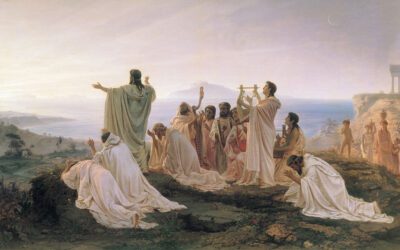
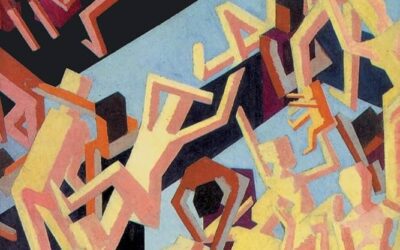
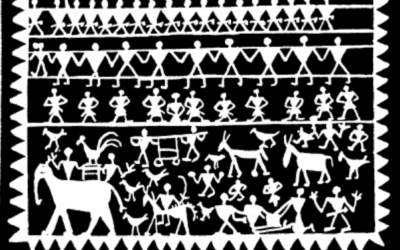

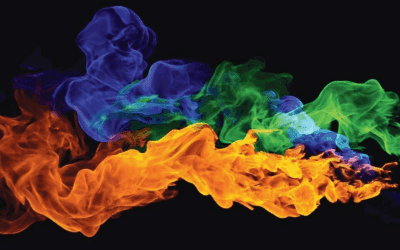








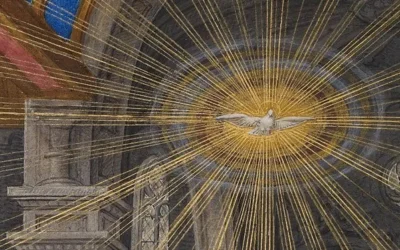









0 Comments